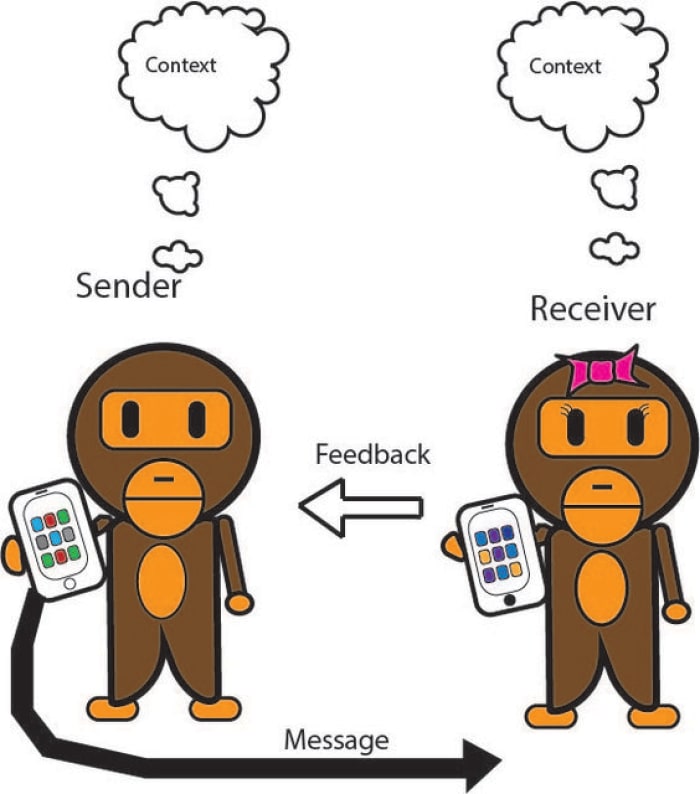Ways of communication between services in a Microservice system
1. Synchronous Communication
Synchronous communication involves a real-time interaction where one service sends a request to another and pauses its operation until a response is received. REST APIs and gRPC are common protocols used to facilitate this type of communication.

1.1 RESTful API
A RESTful API (Representational State Transfer) is one of the most common methods for services to communicate with each other in a microservices system. REST utilizes HTTP/HTTPS and JSON or XML formats for data exchange.
Typically, services interact with each other by directly invoking the API of another service.
Example request and response:
GET /users/12345 HTTP/1.1
Host: api.userservice.com
Accept: application/json
Authorization: Bearer your-access-token
{
"userId": "12345",
"name": "Michel J",
"email": "MJ@example.com",
"address": "Mountain View, Santa Clara, California"
}
Source code example
import org.springframework.web.client.RestTemplate;
import org.springframework.http.ResponseEntity;
public class OrderService {
private final RestTemplate restTemplate = new RestTemplate();
private final String userServiceUrl = "https://api.userservice.com/users/";
public User getUserById(String userId) {
String url = userServiceUrl + userId;
ResponseEntity<User> response = restTemplate.getForEntity(url, User.class);
return response.getBody();
}
}
Advantages:
Easy to deploy and integrate with various languages and tools.
Can easily use testing and monitoring tools.
Disadvantages:
May not be efficient for high-speed requirements due to its synchronous nature.
May encounter difficulties in handling network errors or disconnections.
1.2 gRPC
gRPC, standing for Google Remote Procedure Call, is a high-performance, open-source universal RPC framework. It utilizes HTTP/2 for efficient data transfer and typically relies on Protocol Buffers, a language-neutral, platform-neutral, extensible mechanism for serializing structured data, to define the structure of the data being sent and received.
Example, Definition of Protocol Buffers
syntax = "proto3";
package userservice;
// Define message User
message User {
string userId = 1;
string name = 2;
string email = 3;
string address = 4;
}
// Define service UserService
service UserService {
rpc GetUserById (UserIdRequest) returns (User);
}
// Define message UserIdRequest
message UserIdRequest {
string userId = 1;
}
For the User Management service, you should implement a gRPC server that adheres to the service definition provided in the .proto file. This includes creating the necessary server-side logic to handle incoming gRPC requests and generate appropriate responses.
import io.grpc.stub.StreamObserver;
import userservice.User;
import userservice.UserIdRequest;
import userservice.UserServiceGrpc;
public class UserServiceImpl extends UserServiceGrpc.UserServiceImplBase {
@Override
public void getUserById(UserIdRequest request, StreamObserver<User> responseObserver) {
// Assuming you have a database to retrieve user information.
User user = User.newBuilder()
.setUserId(request.getUserId())
.setName("Michel J")
.setEmail("MJ@example.com")
.setAddress("Mountain View, Santa Clara, California")
.build();
responseObserver.onNext(user);
responseObserver.onCompleted();
}
}
import io.grpc.Server;
import io.grpc.ServerBuilder;
public class UserServer {
public static void main(String[] args) throws Exception {
Server server = ServerBuilder.forPort(9090)
.addService(new UserServiceImpl())
.build()
.start();
System.out.println("Server started on port 9090");
server.awaitTermination();
}
}
Advantages:
High performance and bandwidth efficiency due to the use of HTTP/2 and Protocol Buffers.
Supports multiple programming languages and has good scalability.
Disadvantages:
Requires a translation layer if services do not support gRPC.
Can be more complex to deploy and manage.
2. Asynchronous Communication
Asynchronous communication refers to the process of a service sending a request to another service without blocking its own operation to await a reply. This is commonly achieved through message queues or publish/subscribe systems.

1. Message Queues
Message queuing systems, like RabbitMQ and Apache ActiveMQ, facilitate asynchronous communication between services.
Advantages:
Improved scalability and fault tolerance: The system can better handle increased workloads and is less susceptible to failures.
Reduced load on services: By decoupling request sending and receiving, the main services can focus on processing tasks without being overwhelmed by constant requests.
Disadvantages:
May require additional effort to manage and maintain: Queue-based systems can be more complex and require more resources to operate.
Difficulty in handling ordering and ensuring message delivery: Ensuring that requests are processed in the correct order and that no messages are lost can be a technical challenge.
2.2. Pub/Sub System
A Pub/Sub (Publish/Subscribe) system, such as Apache Kafka or Google Pub/Sub, allows services to publish messages and subscribe to topics.
Advantages:
Supports large scale and high throughput data streams.
Reduces dependencies between services.
Disadvantages:
Requires a more complex layer to manage and monitor topics and messages.
Can be challenging to handle ordering and reliability issues with messages."
If you are interested, you can read my previous articles on the pub/sub topic.
Dead Letter Queue in a Message Broker part 1
Dead Letter Queue in a Message Broker part 2
Consistency and reliability concerns within the Message Broker system
3. Event-Driven Communication
Event-driven communication is when a service emits an event and other services respond or take actions based on those events.
3.1. Synchronous Events
Synchronous events occur when a service emits an event and waits for a response from other services.
Advantages:
Easy to control and monitor the event processing process.
Disadvantages:
Can cause bottlenecks if responding services are slow or encounter errors
3.2. Asynchronous Events
Asynchronous events occur when a service emits an event and does not need to wait for an immediate response.
Advantages:
Reduces waiting time and improves scalability.
Helps services operate more independently and reduces mutual dependencies.
Disadvantages:
Requires additional mechanisms to ensure events are processed correctly and timely.
Difficulty in ensuring order and handling duplicate events.
4. Conclusion
The choice of communication method between services in a microservices system depends on factors such as performance requirements, reliability, and system complexity. Each method has its own advantages and disadvantages, and understanding these methods will help you build a more efficient and flexible microservices system. Carefully consider the requirements of your system to choose the most suitable communication method.
The above is the detailed content of Ways of communication between services in a Microservice system. For more information, please follow other related articles on the PHP Chinese website!

Hot AI Tools

Undresser.AI Undress
AI-powered app for creating realistic nude photos

AI Clothes Remover
Online AI tool for removing clothes from photos.

Undress AI Tool
Undress images for free

Clothoff.io
AI clothes remover

Video Face Swap
Swap faces in any video effortlessly with our completely free AI face swap tool!

Hot Article

Hot Tools

Notepad++7.3.1
Easy-to-use and free code editor

SublimeText3 Chinese version
Chinese version, very easy to use

Zend Studio 13.0.1
Powerful PHP integrated development environment

Dreamweaver CS6
Visual web development tools

SublimeText3 Mac version
God-level code editing software (SublimeText3)

Hot Topics
 1664
1664
 14
14
 1423
1423
 52
52
 1318
1318
 25
25
 1268
1268
 29
29
 1248
1248
 24
24
 Is the company's security software causing the application to fail to run? How to troubleshoot and solve it?
Apr 19, 2025 pm 04:51 PM
Is the company's security software causing the application to fail to run? How to troubleshoot and solve it?
Apr 19, 2025 pm 04:51 PM
Troubleshooting and solutions to the company's security software that causes some applications to not function properly. Many companies will deploy security software in order to ensure internal network security. ...
 How do I convert names to numbers to implement sorting and maintain consistency in groups?
Apr 19, 2025 pm 11:30 PM
How do I convert names to numbers to implement sorting and maintain consistency in groups?
Apr 19, 2025 pm 11:30 PM
Solutions to convert names to numbers to implement sorting In many application scenarios, users may need to sort in groups, especially in one...
 How to simplify field mapping issues in system docking using MapStruct?
Apr 19, 2025 pm 06:21 PM
How to simplify field mapping issues in system docking using MapStruct?
Apr 19, 2025 pm 06:21 PM
Field mapping processing in system docking often encounters a difficult problem when performing system docking: how to effectively map the interface fields of system A...
 How does IntelliJ IDEA identify the port number of a Spring Boot project without outputting a log?
Apr 19, 2025 pm 11:45 PM
How does IntelliJ IDEA identify the port number of a Spring Boot project without outputting a log?
Apr 19, 2025 pm 11:45 PM
Start Spring using IntelliJIDEAUltimate version...
 How to elegantly obtain entity class variable names to build database query conditions?
Apr 19, 2025 pm 11:42 PM
How to elegantly obtain entity class variable names to build database query conditions?
Apr 19, 2025 pm 11:42 PM
When using MyBatis-Plus or other ORM frameworks for database operations, it is often necessary to construct query conditions based on the attribute name of the entity class. If you manually every time...
 How to safely convert Java objects to arrays?
Apr 19, 2025 pm 11:33 PM
How to safely convert Java objects to arrays?
Apr 19, 2025 pm 11:33 PM
Conversion of Java Objects and Arrays: In-depth discussion of the risks and correct methods of cast type conversion Many Java beginners will encounter the conversion of an object into an array...
 How to use the Redis cache solution to efficiently realize the requirements of product ranking list?
Apr 19, 2025 pm 11:36 PM
How to use the Redis cache solution to efficiently realize the requirements of product ranking list?
Apr 19, 2025 pm 11:36 PM
How does the Redis caching solution realize the requirements of product ranking list? During the development process, we often need to deal with the requirements of rankings, such as displaying a...
 E-commerce platform SKU and SPU database design: How to take into account both user-defined attributes and attributeless products?
Apr 19, 2025 pm 11:27 PM
E-commerce platform SKU and SPU database design: How to take into account both user-defined attributes and attributeless products?
Apr 19, 2025 pm 11:27 PM
Detailed explanation of the design of SKU and SPU tables on e-commerce platforms This article will discuss the database design issues of SKU and SPU in e-commerce platforms, especially how to deal with user-defined sales...




